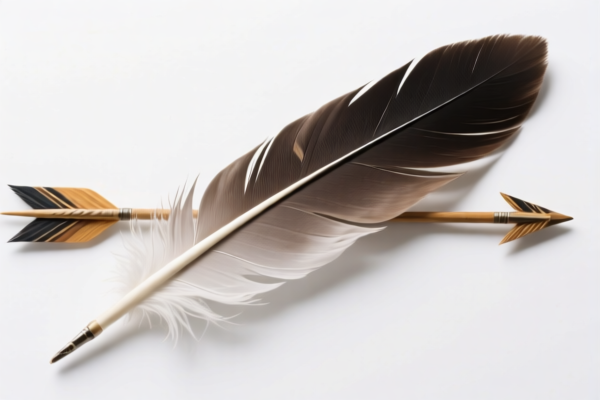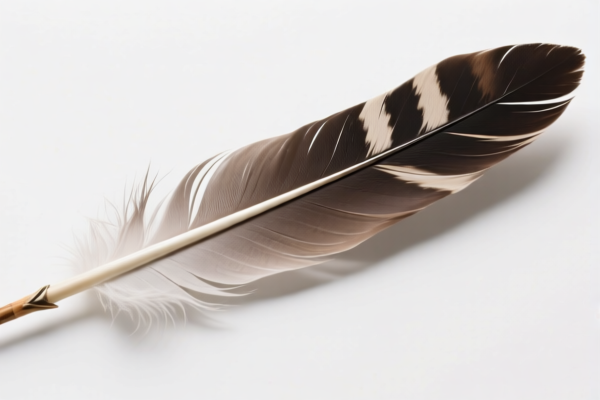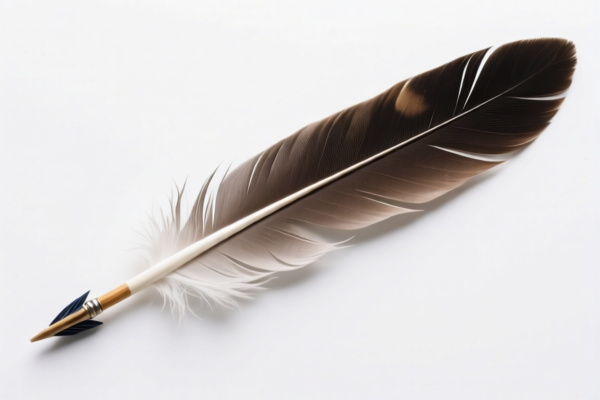| HS Code | Official Doc | Tariff Rate | Origin | Destination | Effective Date |
|---|---|---|---|---|---|
| 5003001000 | Doc | 55.0% | CN | US | 2025-05-12 |
| 5003009000 | Doc | 57.5% | CN | US | 2025-05-12 |
| 6701003000 | Doc | 59.7% | CN | US | 2025-05-12 |
| 6701006000 | Doc | 59.7% | CN | US | 2025-05-12 |




Arrow Feathers
Arrow feathers, also known as fletchings, are integral components of an arrow, crucial for its flight stability and accuracy. They are typically derived from birds, though synthetic materials are increasingly common.
Material
Traditionally, arrow feathers are sourced from birds such as geese, turkey, and pheasant. Goose feathers are highly regarded for their consistent shape and strength. Turkey feathers are also popular, offering good flight characteristics and availability. Modern fletchings utilize materials like plastic vanes (e.g., made from polycarbonate or polypropylene) and specialized films.
Purpose
The primary purpose of arrow feathers is to provide aerodynamic stability during flight. They counteract the natural tendency of an arrow to yaw (rotate around its longitudinal axis) and pitch (move up or down). Without fletchings, an arrow would tumble erratically and lose accuracy and range.
Function
Fletchings function by creating drag and lift forces that guide the arrow’s trajectory. As the arrow travels through the air, the fletchings interact with the airflow, correcting deviations from the intended path. The size, shape, and angle of the fletchings influence the arrow’s behavior. Specifically:
- Stabilization: They resist rotation, keeping the arrow pointed in the direction of travel.
- Steering: Subtle variations in fletching can be used to induce a slight curve in the arrow's flight path, useful for instinctive shooting or compensating for wind.
- Range: By influencing aerodynamic drag, fletchings contribute to the arrow's overall range and speed.
Usage Scenarios
Arrow feathers are essential for:
- Archery: Target archery, hunting, 3D archery, and field archery all rely on fletched arrows.
- Historical Reenactment: Traditional archery techniques often utilize natural feathers for authenticity.
- Competitive Shooting: Precise fletching is critical for achieving high scores in competitive archery disciplines.
Common Types
- Traditional Feathers: Whole feathers, typically cut and shaped by hand. These are often used in historical archery and by enthusiasts who prefer a natural feel.
- Plastic Vanes: Molded plastic fletchings, available in a wide range of shapes, sizes, and colors. These are durable, consistent, and require minimal maintenance. Common vane shapes include:
- Shield-Cut: A common, all-purpose vane shape.
- Profile Vanes: Designed for maximum drag and stability.
- Helical Vanes: Wound at an angle to induce spin, enhancing stability and range.
- Spin Vanes: Designed to create more spin on the arrow for increased stability.
- Parabolic Vanes: Designed for longer range and increased accuracy.
Arrow feathers fall under the classification of “Skins and other parts of birds with their feathers or down, feathers, parts of feathers, down and articles thereof (other than goods of heading 0505 and worked quills and scapes)”. The following HS codes are applicable:
- 6701003000: This code covers “Articles of feathers or down”. This includes items manufactured using feathers or down, such as decorative items or components for larger products. The tax rate details are: Basic tariff: 4.7%, Additional tariff: 25.0%, Post-April 2, 2025, additional tariff: 30.0%, with a total tariff of 59.7%.
- 6701006000: This code covers “Other” items within this category. If the arrow feathers are not specifically manufactured into articles, but are being imported in a raw or semi-processed state, this code would apply. The tax rate details are: Basic tariff: 4.7%, Additional tariff: 25.0%, Post-April 2, 2025, additional tariff: 30.0%, with a total tariff of 59.7%.
Regarding HS codes 6701003000 and 6701006000, it is important to determine whether the feathers are incorporated into finished “articles” or are being imported as raw materials or components.
Customer Reviews
The overview of different types of arrow feathers was informative and well-structured. I learned a lot about the materials and their uses.
The HS code 6701003000 was clearly explained, and the tax breakdown made it easy to understand the 59.7% total rate. Thank you for this detailed info!
The page has useful information, but I found it a bit confusing when trying to determine which HS code applies to my product. More guidance would be helpful.
The explanation of how arrow feathers function in archery was really helpful. It gave me a better understanding of their importance in the sport.
I was looking for HS codes for arrow feathers, and this page had exactly what I needed. The information was clear and well-organized.